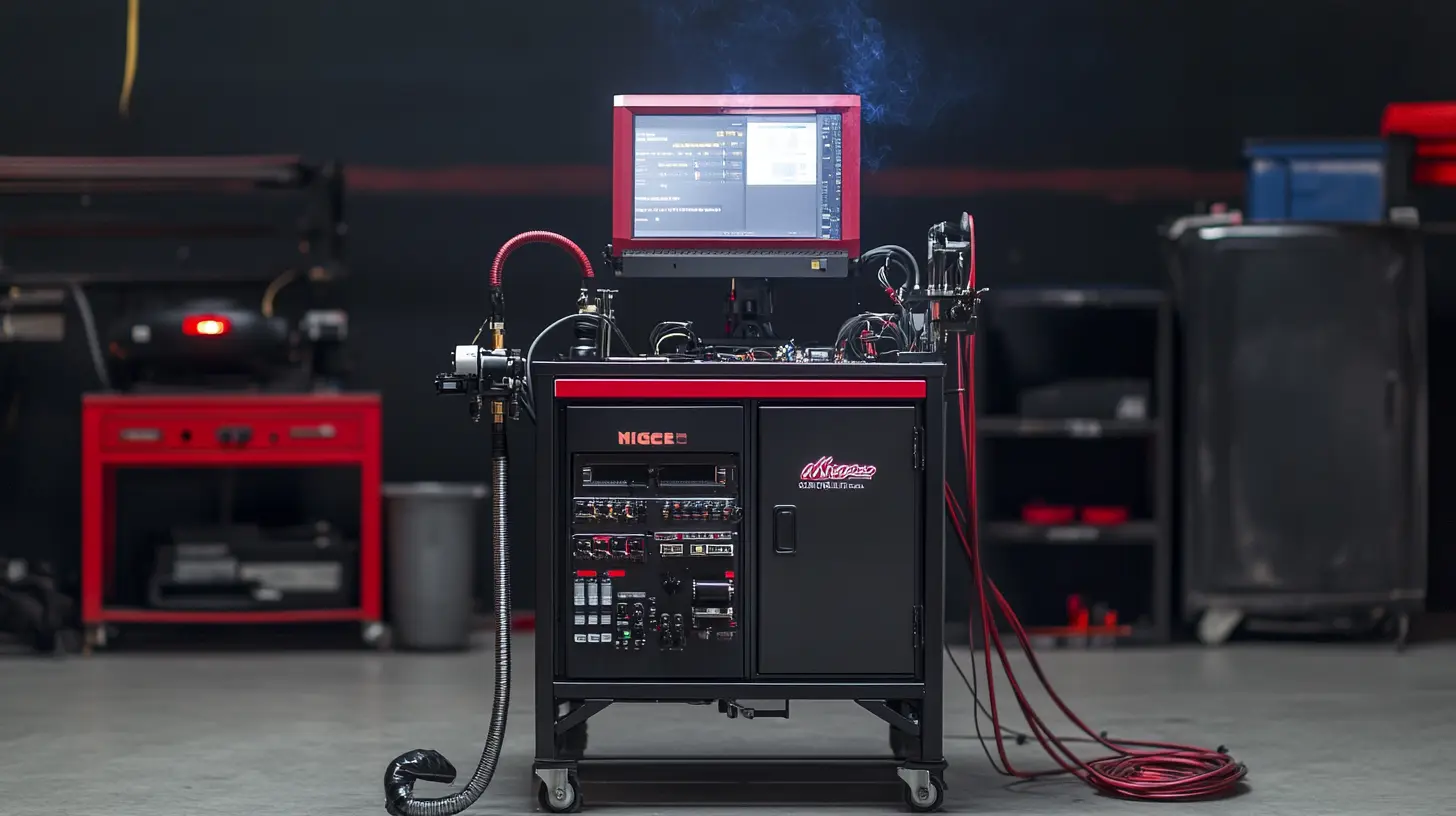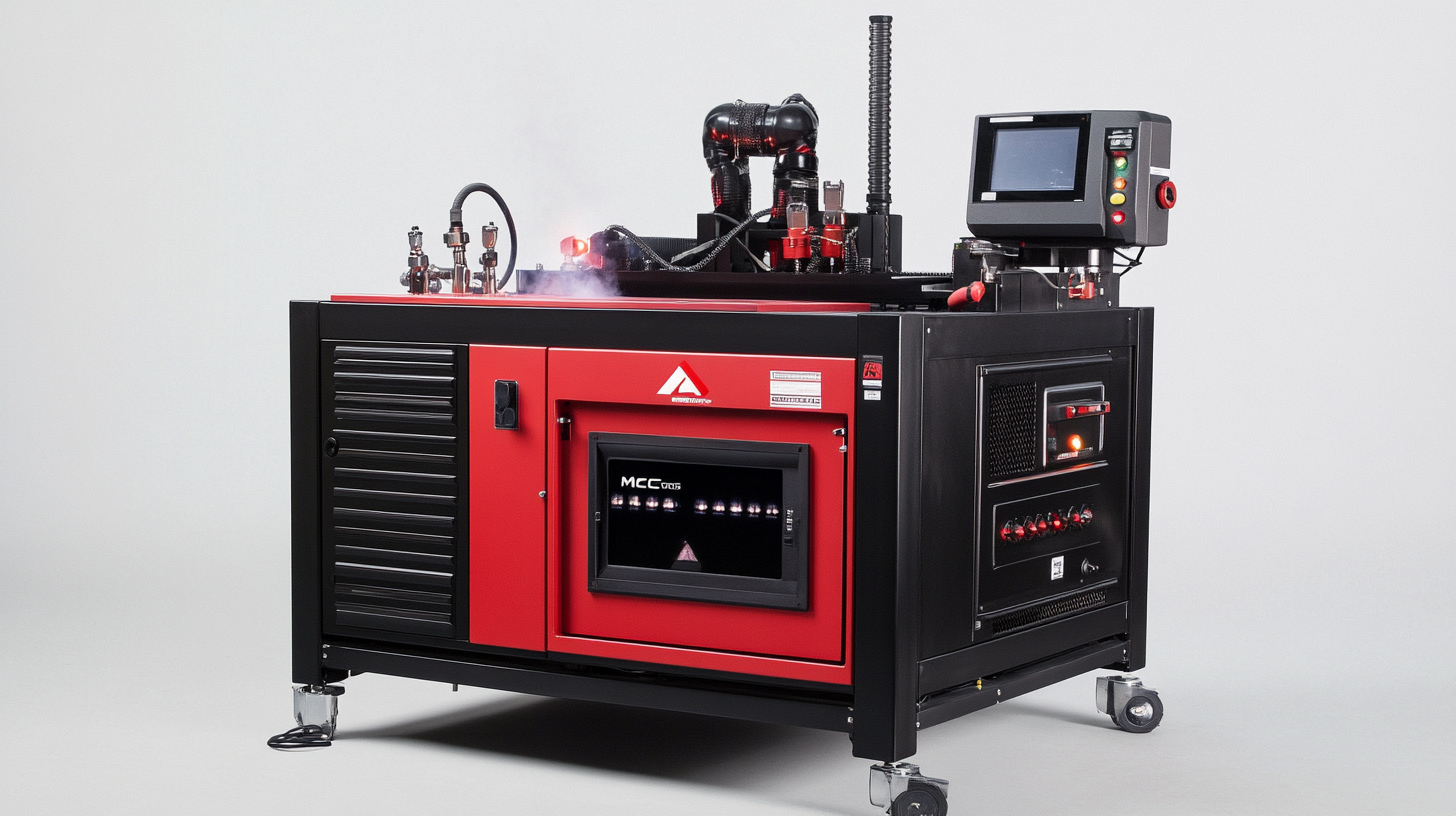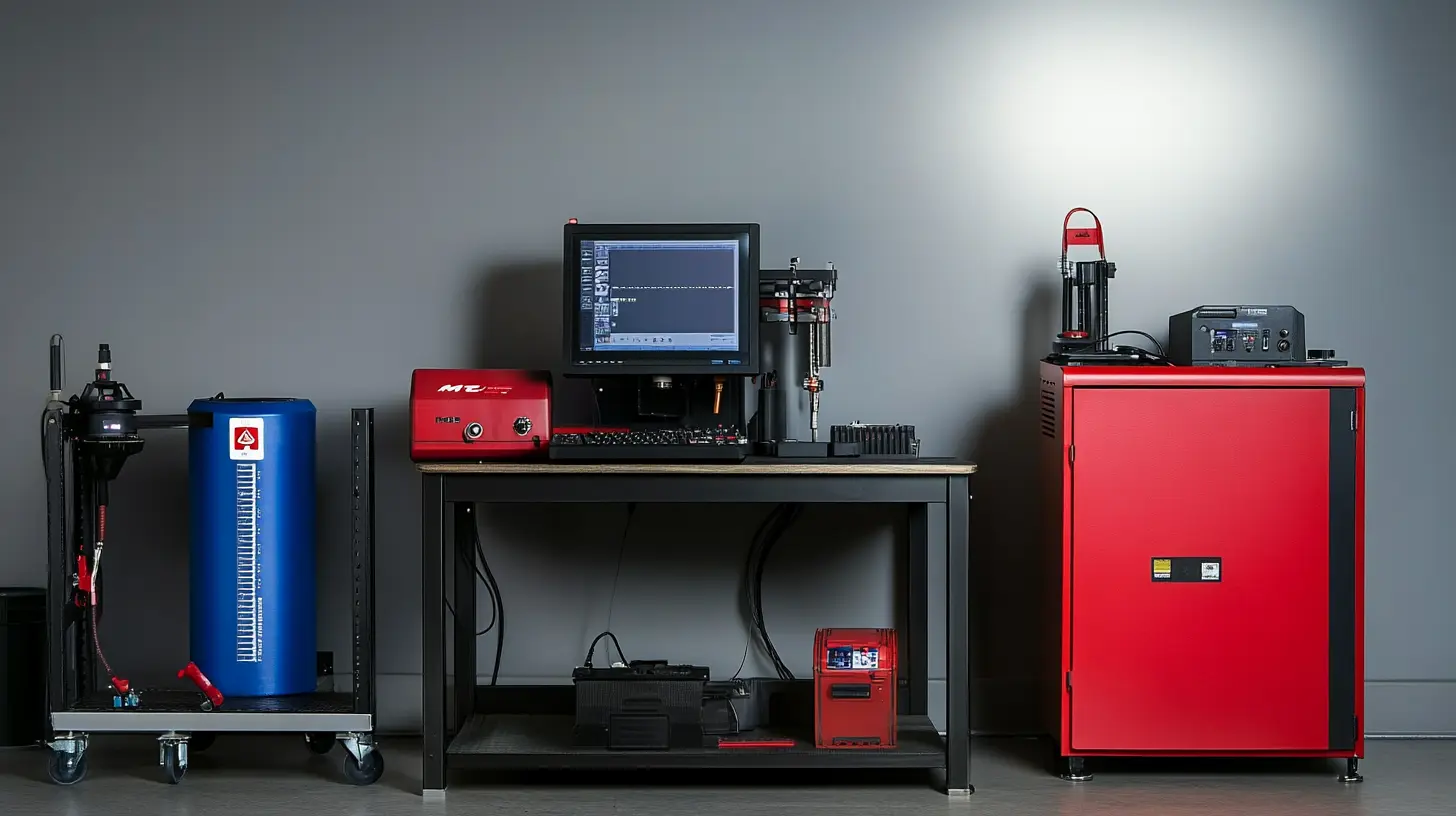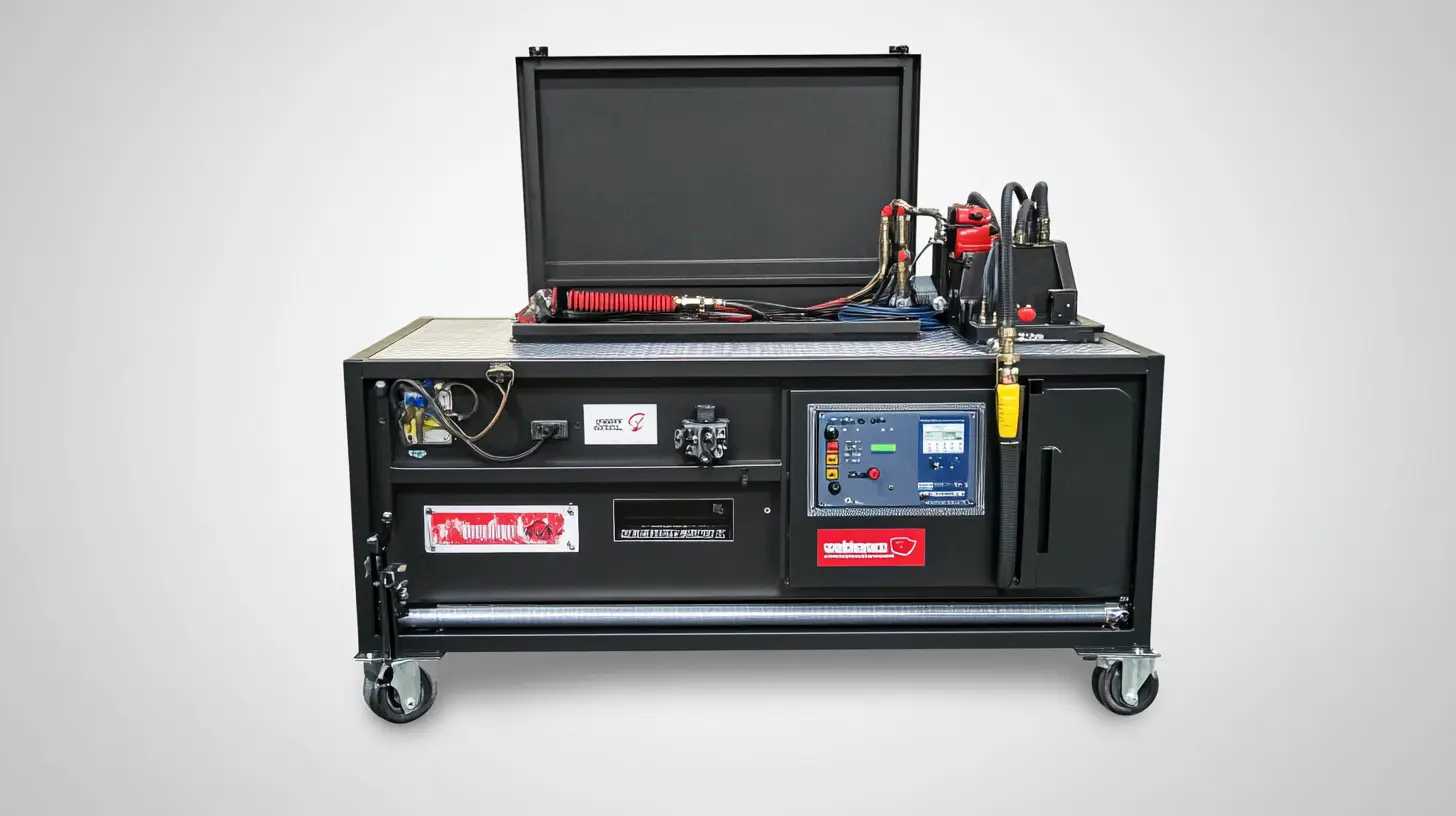The MIG welding machines have emerged as a prime requirement in different industries considering their efficiency and quality. In its research report by AWS, the demand for welding equipment, especially MIG welding machines, has immensely risen and is said to grow by an approximate 5% per year over the next five years. This rising need shows how important the automotive and the manufacturing sectors are for studying the specifications and setup techniques of these MIG welding machines for their full performance.
TAIZHOU YIKE MACHINERY CO., LTD operates in and manufactures a large range of inverter welding machines including MIG welding machines of good quality at competitive prices. The company is situated in Xiayangzhang, Daxi Town Wenling City, Zhejiang, China, giving it a vantage position for distribution with the neighboring Taizhou airport and Ningbo and Shanghai ports. With this background on the in-depth specifications and setup techniques for MIG welding machines, our goal is to provide users with the knowledge for enhancing their welding operations and hence their productivity and quality in projects.

So, at the very start of MIG welding, the types of MIG welding machines are very crucial for the person intending to select particular types of equipment according to their needs. MIG, actually known as Metal Inert Gas welding, is a procedure that uses continuous wire feed as an electrode and an inert gas to shield the weld pool from contamination. It is noted to be fast and versatile and, therefore, applicable to various fields of work, from automotive to construction to artistic metal fabrication. One would consider three possible kinds of MIG welding machines: transformer-type welding machines, inverter-based welding machines, and multi-process welding machines. Transformer-based systems are heavy-duty and robust, while inverter-based machines are light and portable and generally have some advanced technology integrated within them, thus providing greater control and efficiency of the welding procedure. The multi-process machines, as the name implies, can switch between MIG, TIG, and stick welding applications, ideal for those who need different processes for different projects. Understanding where each type finds its application goes a long way in tapping into the full potential of the welding process. For instance, a lightweight inverter with adjustable settings would be well suited for thin materials like sheet metal, while a transformer-based machine to perform the heavy-duty work with high amperage settings would be necessary for thicker metals or for industrial applications. Matching the right machine to project specifications will guarantee quality welds and increase your overall productivity in welding.

Several specifications play a vital role in the outcome of your project when choosing a MIG welding machine. The most important one is the machinist's amperage range. For light metal thicknesses, a machine with lower amperage (30-140 amps) would normally do; while heavier materials would require a higher range (above 300 amps, even). Knowing the thickness of the materials to be handled will help you choose a machine that can deliver the desired welding performance.
The duty cycle of the welding machine is another specification to consider. It is simply the time duration for which the machine can operate at a certain output in a specified timeframe, which is usually evaluated over a ten-minute interval. The more the duty cycle, the longer you would be able to weld without making the machine too hot. Find machines that have a minimum of 60% duty cycle in cases where extended use is required for industrial applications. Equipment weight and portability also factor into your accommodations, especially when machines are frequently moved. Compact and lightweight units provide easy travel without sacrificing performance.
Wire drive system and voltage settings are very important while selecting a MIG welder. A well-functioning wire drive system allows consistent, trouble-free feeding of the welding wire, which in turn maximizes the quality of your welds. Voltage settings that can be adjusted should be considered, as these will allow for greater flexibility across materials and thicknesses. With these specifications in mind, you'll be better equipped to make a valid decision regarding your welding requirements.

It is the most crucial requirement of the right tools and equipment for setting up a MIG welding machine from the very beginning with successful operations. The essential equipment not only in welding efficiency enhancement, but also in high productivity industries like manufacturing has been reflected in quality welding. The latest study with evidence connected with industry experts indicates the handheld welding market globally probably exceeding $10 billion by 2025, and with innovations, like the integrated advanced laser handheld welding machines, exemplifies the trend towards smarter integrated solutions.
The development of robotics in the workplace is part of the practice of integration and can be witnessed in states such as Shandong, where this solution is becoming commonplace on the floor of the factory. In fact, a prime example of a welding robot from Shandong Waterbo Intelligent Equipment Co., Ltd. describes an indication that would be progressive on how advanced this machinery is going-and hence, used for precision in welding with less manual conduct, especially in complex jobs. Such an introduction now allows a standard output to be done in compliance with the standards raised through recent measures in the industry with respect to various machinery, especially electric bicycles requiring stringent welding standards.
On the other hand, the recent exhibition includes the 26 th Beijing Essen Welding and Cutting Fair, proving its dedication to state-of-the-art tools and techniques and the welding community itself. The companies are spending money on machines that entail comprehensive operational capability, such as the much-heralded Huanri Laser K1M series from the Huanri company that is expected to transform traditional welding into panoramic welding technology. And all this points toward movement not just in automatic and integrated welding processes but also the entire manufacturing movement toward optimizing even the smallest operating spaces for maximum output.

Setting up a MIG welder can be a daunting task, but it can be simplified by breaking the whole setting up process into smaller but straightforward instructions that ensure readiness for machine use. It all starts with a clean, dry, and well-ventilated area. Ensure you've got safety gloves, goggles, and a helmet before starting any process. Gather welding wire, gas, and any other tools for your activity.
Begin by setting up the welding machine. First, connect the gas cylinder; ensure that you have the right type of shielding gas for your project. Install and attach the specific welding wire, which is compatible with your machine and also the metals that you want to weld. Set all the parameters of MIG welder, based on the thickness and type of material you will use as well. Familiarize the features of the machine like voltage and speed adjustment of wire feed; that will allow adjusting the output to fit your needs.
After the machine is set up, practice it with scrap materials as part of perfecting the settings with proper use before beginning the actual project. Remember-the best results are achieved most with the right setup and the right way, almost like what is happening with automobiles today. Modern-day manufacturing give more to the importance of precision and efficiency—these are just as important in MIG welding as seen in the forms of vehicle structures and enhanced hybrid power systems.
MIG welding is famous for its fast and efficient application. But it can sometimes be challenging, especially for the beginner and the expert alike. One of the most commonly encountered hurdles is the improper wire feeding, causing inconsistent welds. Such problems usually oftentimes arise because of the wrong tension setting or if there might be some obstruction inside the gun liner. The way around wire-feed inconsistency is to ensure that the diameter of your welding wire is suited to your machine, with clear and properly adjusted feed rollers. It is equally wise to maintain and check the condition of the liner regularly to eliminate possible interruptions in wire feeding and, instead, promote smooth functionality.
Another ongoing issue arises when distortion or warping affects the base materials through high heat input. This typically occurs if welders have applied excessive voltage or travelled too slowly. One effective way to correct this situation is to modify your settings as a function of material thickness and to employ stitch welding on larger sections. This means injecting short bursts of weld instead of a continuous bead to give heat less of a chance to build up in order to keep any heat from distorting the workpiece.
Well, penetration and bead presentation put up another test for the beginner. Very low gas flow results in oxidation and porosity, and excessive flow results in the spattering. Relate your small test beads with fine-tuning the gas flow settings and voltage settings to a balance that is good for you. Furthermore, maintaining a constant travel speed and angle of the torch will definitely help keep the bead profile and penetrate well, thus creating a lot of clean and strong welds.
Setting up my MIG machines used to require emphasis on safety priorities all round. Adopting the complete PPE before starting work: welding helmet with appropriate filters, flameproof gloves and flameretardant protective clothing covering all the exposed skin portions. Plus, make sure that the breathing zone is well-ventilated to reduce the exposure to fumes and gases produced during welding processes.
Another safety precaution is to carry out the pre-use checks on your MIG welding machine and accompanying equipment in checking frayed wires and hoses and safekeeping connections. Have a fire extinguisher at hand as welding sparks can ignite combustible materials. Establish the workspace around a safety perimeter that unobtrusively prevents unsuspecting outsiders from coming closer to your welding space, and now be alert regarding surroundings to avoid accidents.
Posture and stance should minimize fatigue and possible injury while welding, where one needs to keep steady with the welding gun and be aware of sudden metal splatter. Always have the machine in line with safety guidelines it came with; avoid method that will source bypass. Following these simple safety measures will provide a safer and more successful welding experience.
Increased longevity and the performance of your MIG welding equipment require proper maintenance. Cleaning is the least difficult and most practical way to keep your machine in good working condition. After each session, get into the habit of cleaning the welding machine’s exterior body and removing any spatter from the nozzle. This keeps dirt and grime from building up on it and affecting the equipment’s performance over some time. Meanwhile, checking your gas supply and the condition of your welding wire regularly will help in preventing sudden surprises on the welding sites.
Another significant aspect of maintenance is to check and replace consumable parts whenever necessary. MIG welding machines rely on the use of contact tips, liners, and nozzles that wear with use. Keeping a stock of such parts allows you to continue welding with confidence while avoiding waste of time on repairs. Periodic checks of the power cord and connectors should also be made to ensure that no damage or wear is evident. Addressing the little things before they grow can avoid larger electrical problems in the future.
Calibrating your MIG is an important maintenance aspect. Setting the machine regularly according to the material you are working on further assures longevity, while a wrong setting might give you a pore in your work. The calibration routine itself may vary according to the manufacturer, so it's best always to check their recommendations. The incorporation of the above maintenance practices in your type of MIG welding equipment will surely give you longer life and efficiency and guarantee quality work on all your welding projects.
Mastering MIG welding involves not just knowing the specifications of your machine but also learning advanced techniques that could improve your skill significantly. One of the most effective techniques to improve your precision is control over the traveling speed. It helps ensure the same speed when preparing a uniform weld, with reduced prospect of defects. Start by creating a practice piece, traveling at different speeds, and then notice how each affects the consistency of the bead and its penetration.
Another advanced technique is adjusting the gas flow rate. Most novice welders remain with the factory setting and the best thing you can do is learn to fine-tune your gas flow. This mostly eliminates the chances of oxidation while creating a high-quality weld. You can try increasing and decreasing the flow rates and observe any difference in the aspect of the weld. In addition, this can be used to make adjustments for external factors like wind that interfere with shielding gas.
In addition, proper manipulation of torch angle and travel speed would ultimately affect the quality of welding. MIG welders generally recommend about a 15-degree push angle for propagating a strong weld bead. Adapt yourself to this angle and practice intermittently weaving the torch for wider beads or to fill larger gaps. Thus, by working continuously on these different elements of your technique, it is noticed that MIG welding improves efficiency and progressivity, and cleaner, stronger welds would be produced.
The amperage range is crucial as it determines the machine's ability to handle different metal thicknesses. For lighter materials, a lower amperage (around 30-140 amps) is sufficient, while heavier materials require a higher range, often up to 300 amps or more.
The duty cycle refers to the amount of time a welding machine can operate at a given output within a specific period, typically measured over ten minutes. A higher duty cycle means longer welding periods without overheating, which is essential for industrial applications.
A reliable wire drive system is vital for consistent feeding of welding wire, which minimizes defects in welds. It is important to select machines with a durable drive system to ensure smooth operation.
Adjustable voltage settings provide greater versatility for welding different materials and thicknesses, allowing for better control over the welding process and improving overall results.
Poor wire feeding can be caused by incorrect tension settings or debris in the gun liner. To resolve this, ensure the wire diameter matches the machine specifications and regularly clean and inspect the feed rollers and liner.
To minimize distortion and warping due to excessive heat, welders should adjust parameters according to material thickness and use stitch welding techniques, which involves short bursts of welding rather than continuous beads.
Regular cleaning of the machine's exterior, checking the gas supply and welding wire condition, inspecting consumable parts, and calibrating the welder according to material type are important maintenance practices to ensure longevity and optimal performance.
Proper penetration and bead appearance can be achieved by maintaining adequate gas flow, conducting test beads to fine-tune settings, and keeping a consistent travel speed and torch angle during welding.
Keeping replacement parts such as contact tips, liners, and nozzles allows for consistent welding performance and helps prevent downtime due to worn-out components.
Regular calibration of the welder's settings according to the material being worked on can prolong the machine's lifespan and improve the quality of welds, ensuring efficient operation.

